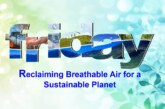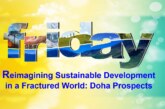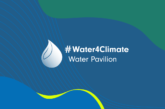- Dr. Arvind Kumar – President & Founder, India Water Foundation
- Dr. S.K.Sharma – Consultant (Top Level Expert (TLE) WAPCOS Limited and Former Member, Central Ground Water Board (CGWB). Ministry of Jal Shakti, Government of India)& Principal Advisor, India Water Foundation
- Lalit Gupta- SeniorEngineer, WAPCOS Limited, Gurugram
ABSTRACT
The changes in catchment areas of Lakes & water bodies influence their water yield and quality. The industrial, agricultural and anthropogenic activities variously degrade devaluate the status of water bodies. Lake-pond contaminants caused by in-flow of untreated waste water create severe problems for human livelihood and environment. In order to reduce the impacts of degradation of Lake-pond water bodies, detailed restoration plans are necessarily required including solution for rejuvenation of lake-water bodies. Preventive & Ameliorative Lake-restoration methods are discussed which basically illustrate diversion &treatment of waters before entry into water bodies. Paper also discusses possible outcomes of Restoration methods described. Case studies of two selected lake-water bodies from Gurugram and Faridabad districts of Haryana are described.
Introduction
The quality and hydrological regime of Water bodies (Lakes & Ponds)in Municipal areas in India are directly dependent on integrity of its watershed.
City Lakes/Ponds have been influencing andhelping in following activities.
- Recharging of ground water resources
- Flood mitigation
- Supporting food/fodder livelihoods.
- Modification of Micro-Climates.
- Aiding in local water demand (both domestic&irrigation)
Rapid urbanisation & unplanned anthropogenic activities have altered the ecosystem across the urban areas. The changes in catchment area of water bodies has influenced water yield and water quality of the city lake water bodies in India.
The continuous in-flow of untreated wastewater to water bodies increase pollution loads.
Restoration or rejuvenation for recovery of Water bodies which are variously degraded through increase in urban, industrial & anthropogenic activities is, therefore, an inescapable necessity of time since the lake-pond pollutants can cause severe problems for human health & environment.
Problems and Issues
Rapid urbanisation in city areas greatly stress the water resources both quantitatively &qualitatively. As a result of these two combined and naturally integrated activities enormous sewage & wastewater is generated that feeds the city water bodies.
Main Issues include;
- Anthropogenic Activities as main cause of risks to Water Bodies.
- Degradation due to habitat destruction & shrinkage of water volume over the years.
- Pollution Levels in Water Bodies
Such issues as well as the recognised significance of Lake/ Pond Water bodies as ecological & socio-economic entities, the Govt. & stakeholders are required to initiate the course of action to developing Management plan in order to conserve aquatic & territorial diversity with a focus to preparing a City-level Management Plan related to preservation and protection of water bodies.
Aim &Objectives
The Management Action Plan aims to control pollution at source using practical technology followed by treatment measures before water discharge. The restoration of water bodies will broadly involve repairing physical structure and improving of Water quality. In order to reduce the impacts of degradation of water bodies,a study for restoration is required to be prepared with recommendable solutions for rejuvenations.
- Major Pathways to Lake/Pond Rejuvenation & Conservation
Pathways to Rejuvenation& conservation of Water Bodies, include:
Field study & Data Analysis
- Survey of water bodies(Lakes, ponds and wetlands)
- Water quality analysis
- Flow characteristics (In-flows & outflow)
- LULC analysis
- Bathymetric data analysis
- Rainfall analysis
- Sediment Analysis (desiltation etc.)
- Assessment of Fauns& Flora
- Socio-economic Survey.
In-Lake/pond Treatments
- Dredging&desilting
- Deweeding
- Aeration of Lake Water
- Phosphorous reductions
- Chemical & biological measures.
Lake-shoreline Management
- Lake & pond fencing
- Maintaining buffer zones.
- Waste water management
- Walk ways & consultancy Toilets provisioning
- Parks & Garden Management
- Water Boating in Lake.
Lake& Pond/Pond conservation Measures
Engineering Measures:
- Watershed Catchment treatments
- Provisioning of silt-traps at inlets of water bodies.
- Improvement of Inlet points.
- Construction of Sewage Treatment Plants (STPs)
- Constructed Wetlands
Lake/Pond Restoration Methods & Feasibility of Water Quality
Methods of Restoration: Lake Restoration Techniques: These include,
Table1: Methods
| (i) | Preventive Methods (Direct) | : | Drainage basin alteration Diversion of Wastes Legal Control measures |
| (ii) | Ameliorative Methods (Indirect) | : | In-Lake (Physico-chemical & Biological) |
| Outside-Lake (Physico-chemical& Biological) |
- Preventive methods identify pollutants, reduce their rate of generation& prevent them from recharging the Lake.
- Ameliorative method involves the treatment of waste before discharge in to lake.
Preventive Methods
- Drainage basin Alternations (Primarily for Controlling non-point source of pollution)
This approach is suitable for controlling non-point sources of pollution, land development activities, logging of forestland & construction activities.
Drainage basin involve structural & load treatment measures & interception of sediments before they reach the lake bodies. Soil erosion management practices like terracing, contour farming, grassed waterways & creation of shallow belts are to be serviced out. Alternatively, mechanical means can be used to divert, retard or control run-off.
- Diversion of Wastes: This is often used as method for improving water quality of Entropic lakes where sewerage effluent are main source of eutrophication. The diversion of such effluent loads can improve quality. Also, simultaneously, there is need to control point & non-point phosphorous & nitrogen sources in the drainage basins/ catchments. It is always desirable to pre-treat the diverted waste water in aerated lagoons etc
- Legal Control Measures: Legal controls in land use activities & discharge of nutrients to restricting indirect pollution effects can be examined and tried. These control measures such as curtailing the use of fertilizer &pesticides in the basin, prohibiting setting up of new industries in Lake catchments, prohibiting inflow & untreated waste water effluents & planting of trees to reducing the erosion can also be experimented.
- Ameliorative Methods: The in-lake Physico-chemical & Biological Methods as well as Out-side-Lake Physico-chemical & biological methods and cost of feasible alternatives for improving the water quality of lake are always the best practices for maintaining & managing Lake systems.
- Water Bodies Rejuvenation Protocols: These are given as below:
Table 2- Rejuvenation Protocol
| 1 | Decontaminating | Desiltation by wet dredging.Stoppage of Dumping of solid waste in Lake-bed/storm waste drains.Stoppage of Pollution: Allowing only treated sewage to enter the lake./PondsDiversion of Sewage from u/s to d/s region not to be allowed. |
| 2 | Evicting Encroachers | Removing of Blockade at in-let & out-let points of water bodies to prevent stagnation of water as well as enhancing aeration in water body. Removing all encroachments at lake bed/at SWDs & in buffer zones. |
| 3 | Regular Maintenance By local (NGOs) | Minimum 5 years maintenance Removing macrophytes from lake water surface Installing formation to enhance surface aeration. |
| 4 | Monitoring &Surveillance | Regular surveillance through Resilient Group/Woman Groups & Educational Institutions. |
| 5 | Policy Implementation | Banning the use of phosphotaes to minimizing the frothing & entirophicates of water bodies. Planting Macrophyte spaces in buffer zone & in open spaces of lake catchment areas. |
| 6 | Governance | Protecting flood plans (buffer-zone) to enhance water retention capacity of Lake. Enhancing flood plains with riparian vegetation so that water gets treated as it passes through riparian zones. Eliminating waste Mafia Maintaining a minimum of 75-100 m buffer zone in city Lake depending on topography & shape of catchment. |
- Lake Restoration & Rejuvenation:
Several of Lake Restoration & resultants due to restoration measures are outlined as below:
| Sl. No. | Restoration Methods | Anticipated Achievements |
| 1. | Aeration of Lake Water & phosphorous inactivation & bio-manipulation with remove of cyprinids. | Reduction in Nutrients, cyanobacterial blooms and phytoplanktons. |
| 2. | Stoppage of waste water flow to the Lake/soil dredging/harvesting of Algae. | Reduction in pollutant concentration (NO3/PO4/BOD & TSS). |
| 3. | Supplying Nitrate rich water from small tributaries to hypolimnion of Lake | Enabling Hydrogen Sulphide to disappear & than measuring redox potential in hypolimnion. |
| 4. | Sediment Dredging (Quantity & quality of dredged material). | Reduction is phosphorous organic matter, TSS and reduction and replacement in plankton dominance in lake by less eutrophic species |
| 5. | Using specific Legal Framework Act to protect Lake Wetland | Using Tank conservation& Development Act-2014 with the role function of protecting, conserving& restoring Lake (s) to facilitate recharge of depleting ground water. |
| 6. | Improving Habitat Quality. | By reducing point & non-point sewage impacts. |
- Activity Adoption and Probable Outcomes
| Sl. No. | Adopting Restoration Methods | Anticipated Outcomes due to Restoration Processes. |
| 1. | Field Survey | To identifying Key issues in and around that Lakes. |
| 2. | Water Sample Collection for determining physico-chemical character of Lake/water Bodies (e.g. WT. DO, TDS, TA, CL, TH, OP, COD BOD, TDS) on-site/in Laboratory. | Creating Distribution Map with water quality data using QGIS software. |
| 2.1 | WQI Estimation using Ten-key water quality parameters (TDS, EC, DO, pH, Ca, Mg, TH, CL, Total alkalinity & nitrate). | |
| 3. | Date Analysis: Pearson’s correlation (r) using physico-chemical parameter of Lakes & factors responsible for variations is Lake Water Quality. | Determining factors responsible for variation is water quality of Lake. |
| 4. | Determining Environmental variables affectivity WQ of Lake with use of Principal Component Analysis (PCA). | Identifying environmental variables that significantly influence Water Quality of Lakes. |
Conclusion
Lake water bodies are vanishing and disappearing in various states of India. Restoration & Rejuvenation of Lake-water bodies as source of water supplies for various tapes of uses has become an inescapable necessity of time. Paper focuses on Lake restoration methods which primarily include desilting as well as removing hyacinth and garbage entry to water bodies. Preventive & Ameliorative methods of use in planning for O&M of Lake water bodies ‘ restoration and rejuvenation need adoption by state water departments with stake-holders participation. Whereas applicability& use of preventive measures include controlling of no-point sources of poolution, diversion of wastes and legal control, the ameliorative measures include use of physio-chemical & biological processes both as in-lake and outside-lake restoration pathways. Possible outcome and achievements of restoration methods are also outlined.
References
- Ramachandra T V, Vinay S, Sincy V, Asulabha K S, SudarshanBhat and BharathH.Aithal, 2016. Devarabisanahalli Lake: Path towards Ecological restoration, ENVIS Technical Report 104, Energy & Wetlands Research Group, CES, IISc, Bangalore, India
- Romero-Muñoz A, Fandos G, Benítez-López A, Kuemmerle T. Habitat destruction and overexploitation drive widespread declines in all facets of mammalian diversity in the Gran Chaco. Glob Change Biol. 2021; 27: 755–767. https://doi.org/10.1111/gcb.15418
- Sahu, M. A. K., Swain, M. S. S., & Rout, M. P. R. (2023). Regeneration and Rejuvenation of Water Bodies in the City of Bhawanipatna. International Journal for Research in Applied Science and Engineering Technology, 11(5), 7514–7522. https://doi.org/10.22214/ijraset.2023.53498
- CPCB. (2019). Indicative Guidelines for Restoration of Water Bodies. 032(26), 1–49. https://cpcb.nic.in/wqm/Ind-Guidelines-RestWaterBodies.pdf
- Government of India Ministry of Water Resources (2009). Guidelines for Repair, Renovation and Restoration of Water Bodies
- Popov, Aleksandr. (2024). About a methodology of the surface water bodies’ rehabilitation. Water Sector of Russia: PROBLEMS, TECHNOLOGIES, MANAGEMENT. 87-107. 10.35567/19994508-2024-4-87-107.
- Singh, Santosh &Haritash, A.K.. (2023). Reversing the damage: ecological restoration of polluted water bodies affected by pollutants due to anthropogenic activities. Environmental science and pollution research international. 31. 10.1007/s11356-023-31295-w.
- Water Body Rejuvenation: A Compendium of Case Studies,2019: Consortium for DEWATS Dissemination(CDD) Society,Bengaluru
- Olga Tammeorg et.al: WIRES , WATER; Sustainable Lake Restoration: From Challenges to Solutions
- Suchita Awasthi: Rejuvenation & Conservation of Water Bodies and Open Area: Training Manual Development by Climate Centre for Cities, NIUA in association with GIZ and DIFU.




